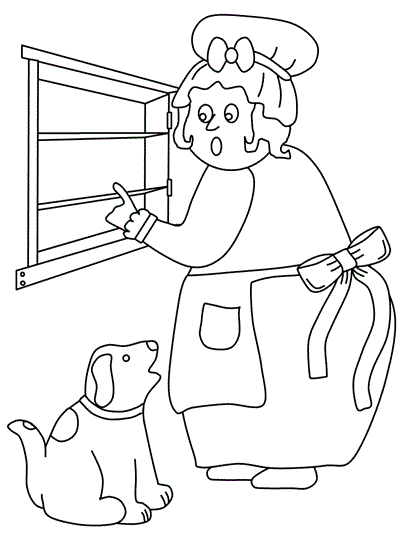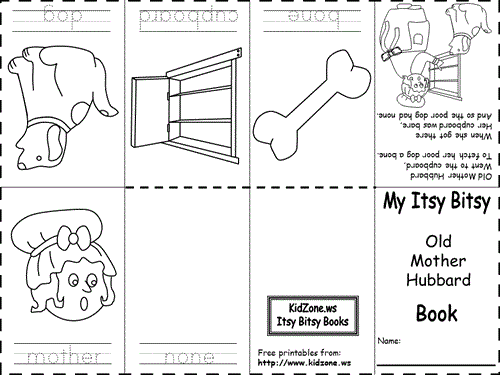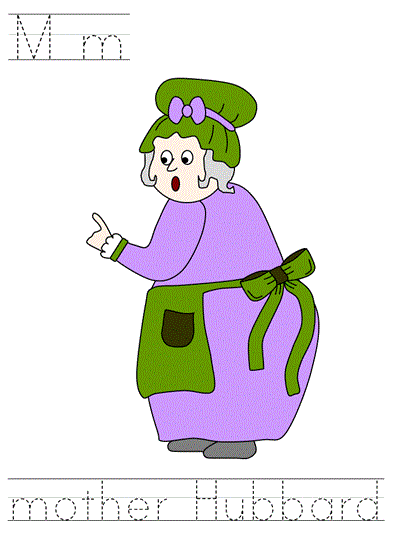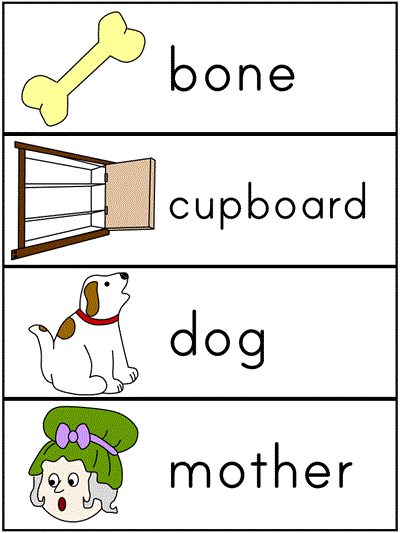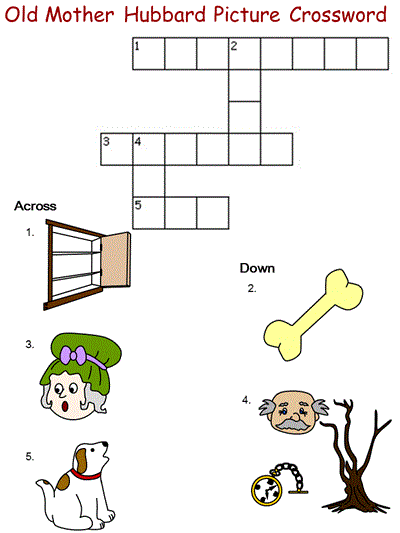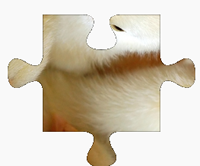DLTK's Nursery Rhymes for Kids
Old Mother Hubbard Activities
Old Mother Hubbard
Went to her cupboard,
To fetch her poor dog a bone.When she got there
Her cupboard was bare.
And so the poor dog had none.
Old Mother Hubbard Lyrics and Coloring Pages:
Old Mother Hubbard Crafts:
Old Mother Hubbard Printable Resources:
Old Mother Hubbard Puzzle Worksheets:
On-Line Games and Puzzles:
The History of "Old Mother Hubbard"
"Old Mother Hubbard" is a classic English nursery rhyme known for its humorous narrative and memorable characters. The rhyme tells the story of Mother Hubbard, who goes to the cupboard to fetch a bone for her dog, only to find the cupboard bare. The poem continues with various antics involving Mother Hubbard and her dog.
Origins and Early History
The rhyme was first published in 1805 by Sarah Catherine Martin. It appeared in a book titled "The Comic Adventures of Old Mother Hubbard and Her Dog," published by J. Harris. The book became immensely popular, leading to several editions and adaptations over the years.
Structure and Content
The original publication includes numerous verses detailing the humorous escapades of Mother Hubbard and her dog. Each verse ends with a surprise or twist, maintaining a light-hearted and playful tone. The rhyme's structure and storytelling approach were innovative for children's literature at the time, contributing to its widespread appeal.
Possible Inspirations
Some theories suggest that "Old Mother Hubbard" may have been inspired by real historical figures or events, though these connections are largely speculative:
- Historical Figures: There is speculation that the rhyme may reference Cardinal Thomas Wolsey, a prominent figure in the court of King Henry VIII. The connection, however, is tenuous and not widely accepted.
- Folklore and Satire: The rhyme's narrative style and humor may have drawn on traditional English folklore and satirical literature, using exaggerated situations and characters to entertain young readers.
Cultural Impact
"Old Mother Hubbard" has had a significant impact on children's literature, influencing the development of humorous and narrative-driven nursery rhymes. Its popularity led to numerous adaptations and illustrations, making it a staple in nursery rhyme collections. The rhyme's engaging storyline and playful tone continue to captivate children and adults alike.
Educational Uses
The rhyme is often used in early childhood education to teach language skills, rhythm, and memorization. Its engaging narrative and colorful characters make it a valuable tool for storytelling and literacy development.

